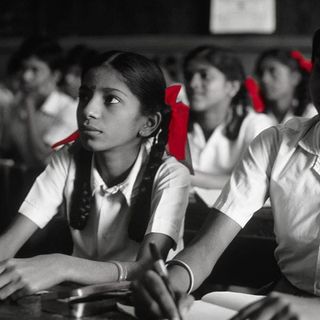Women’s participation in the workforce globally has remained stagnant for the past 25 years, and the pandemic threatens to set back the world to pre-1995 levels of gender inequality, a new United Nations report concludes.
Titled World’s Women: Trends and Statistics, and published last week by the UN Department of Economic and Social Affairs (DESA), the report found that women’s participation in the labor market “has barely changed over the last quarter of a century,” with the primary reasons for the stagnation being family responsibilities and unequal distribution of unpaid domestic and care work.
Among women who do work in the formal labor force, the unequal distribution of power and decision-making roles between women and men remains unchanged. Women held only 28% of managerial positions worldwide in 2019 — another proportion that hasn’t improved since 1995, the report stated. At present, only 18% of companies had a female CEO, and only 7.4% of CEOs in Fortune 500 companies were women — globally. In politics, too, despite women’s participation rising in the last decade, representation hasn’t crossed the threshold of 25%.
“Attitudes of discrimination are slowly changing,” with improvements in women’s education, age of marriage, rates of domestic violence, and maternal mortality, but progress has stagnated in areas like women’s participation in the labor force, and “women are far from having an equal voice to men,” UN-DESA Secretary-General Liu Zhenmin noted.
Related on The Swaddle:
Study: People Who Believe Workplace Gender Equality Exists Are the Most Biased
In India, the ratio of female-to-male participation in the labor market was only 29.8% in 2019 — against the desired ratio of 50%. In fact, a report from last year had found that companies had hired women for only 37 of every 100 new jobs created in India in the financial year of 2019.
The pandemic is worsening the situation. As predicted by economists earlier this year, job losses have disproportionately hit women. Mothers have had one-third the amount of uninterrupted at-home working time as fathers amid pandemic lockdowns, according to a U.K. study. The gender stereotypes behind this disparity have left such a strain on women that many, reportedly everywhere, have at least considered quitting their paid work. And economists worry this reinforcement of traditional gender roles could hamper women’s return to the workforce when the global economy starts to recover. In fact, the International Labor Organization reckons the rapidly unraveling economic crisis will make it harder for “women’s employment to recover,” potentially setting back the gap between women and men to early ’90s levels — or earlier.
“No country has achieved gender equality, and the Covid19 crisis threatens to erode the limited gains that have been made,” said António Guterres, the UN Secretary-General, lamenting that “progress towards equal power and equal rights for women remains elusive.”
“I call on all countries to accelerate efforts towards the empowerment of women and girls and towards improving the evidence base to monitor progress: data gaps in the coverage of key gender topics need to be filled,” Zhenmin concluded.




